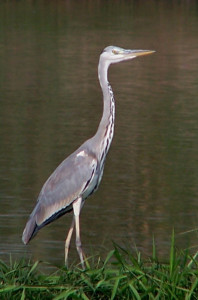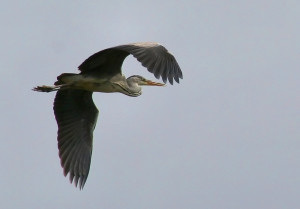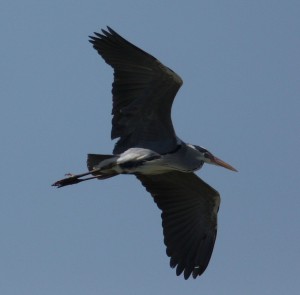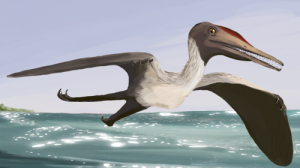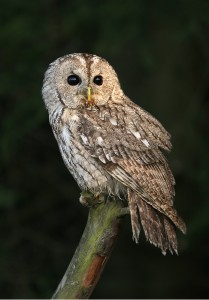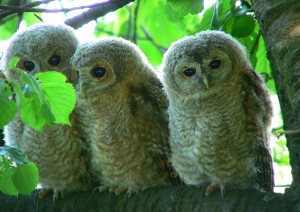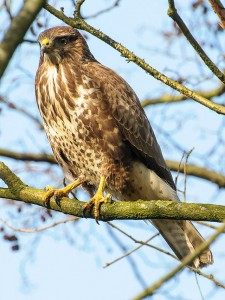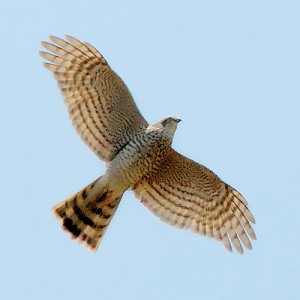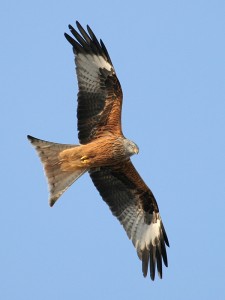Since Chap and I moved to our cottage 22 years ago, we have kept a nature diary. We record what’s going on in the garden, what wildlife we have seen, what the weather is doing, and general impressions of the natural world about us. We have a bird species list, where we note ‘new’ birds when we see them in or over our garden.
Yesterday morning I was chatting to Chap on the phone, looking out of the study window as I always do when I’m on the blower (my desk faces a wall so it’s nice to see the world …!), when I had a wonderful, chance surprise. A heron was flying towards our cottage, not very high at all and coming right at us. It is the first time I have ever seen a heron here (though there are some on the nearby streams and rivers and lakes). I squealed down the phone at Chap and near-deafened him, I think.
It flew right over me and I had a great view of its belly as it passed. Beautiful.
Herons (Ardea cinerea) are such wonderful birds. We sometimes see them standing stock still in the local shallow chalk streams, poised and ready to strike, or walking with that slow, high-stepping tread through the water. They are a beautiful cloudy-sky grey. But it is when they are flying that they intrigue me most, and remind me of nothing more than the illustrations of flying pterodactyls in my dinosaur books from my childhood. Watching a heron fly you can quite easily believe that birds are feathery dinosaurs … Their heads are pulled back, their legs trail behind them and they beat their enormous wings with slow, steady flaps.
Their wingspan is among the largest of British birds, at between 155 and 195 cm for an adult bird.
(I know their proper title is Grey heron, but they are just ‘herons’ here as we don’t have any other type here in the UK—and they are, after all, the original bird to be called a heron).
Such an exciting day. But I think of all our heron sightings, the top one still has to be the day we saw a buzzard (Buteo buteo) and a heron having an aerial dogfight. We used to live in the Woodford Valley north of Salisbury, and were driving close to Lake House when we saw a tussle going on in the sky, just above the trees by the road. The two birds were circling round and round each other and occasionally clashing, and as they are both large birds it was quite a spectacle. We couldn’t quite make out what was going on, but we wondered if the buzzard was harrying the heron to make it regurgitate its catch.
PS. Our lone fieldfare is still with us, 36 days+ and counting. We had some snow the other day—not deep, but enough to remind him of home.
UPDATE Saturday 6 May 2017: This morning we had only our second ever sighting of a heron from our house in the near-twenty five years that we have lived here. And what a close encounter it was: it flew its slow flapping flight very low over our neighbours’ garden, and to our amazement landed in a very ungainly fashion on an overhead line just above the garden. It stayed perched there for about a minute or so before flying off. I hurried to look at our garden to see if it was heading for our pond, but sadly no – although I should be grateful that the tadpoles and newts and frogs live to see another day. Seeing such a massive bird perched on a wire was quite a thing.
